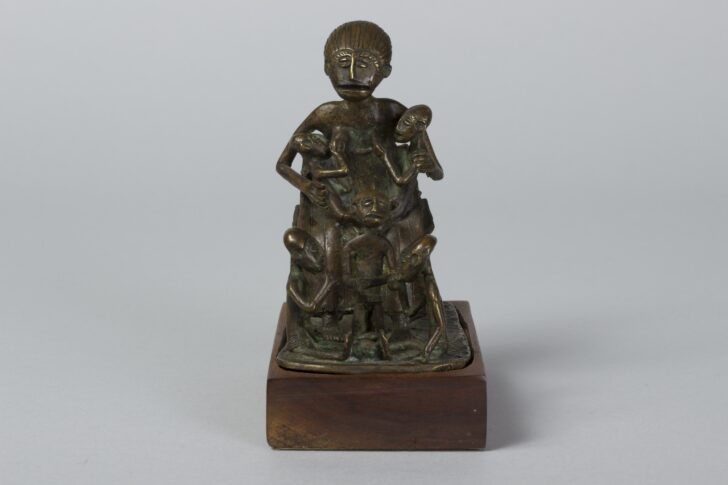Mother and Child Figure
Asante

Description
Subject Matter:
Beginning in the 18th century, the Asante began to produce figural goldweights depicted everyday objects, animals, and humans. Figural statues were typically created using the lost-wax casting method. Though larger than traditional weights, this brass casting potentially served as a goldweight (mrammou) in the measuring of gold dust. Figurative goldweights are often associated with Akan proverbs. Though no longer used to weigh gold, the figures continue to be created. The representation of mother and child depicts the mother’s position of honor, as the Asante are a matrilineal society.
Physical Description:
Seated figure holding two smaller figures with three more smaller figures in front, all made from a single piece of brass.
Usage Rights:
If you are interested in using an image for a publication, please visit https://umma.umich.edu/request-image/ for more information and to fill out the online Image Rights and Reproductions Request Form.